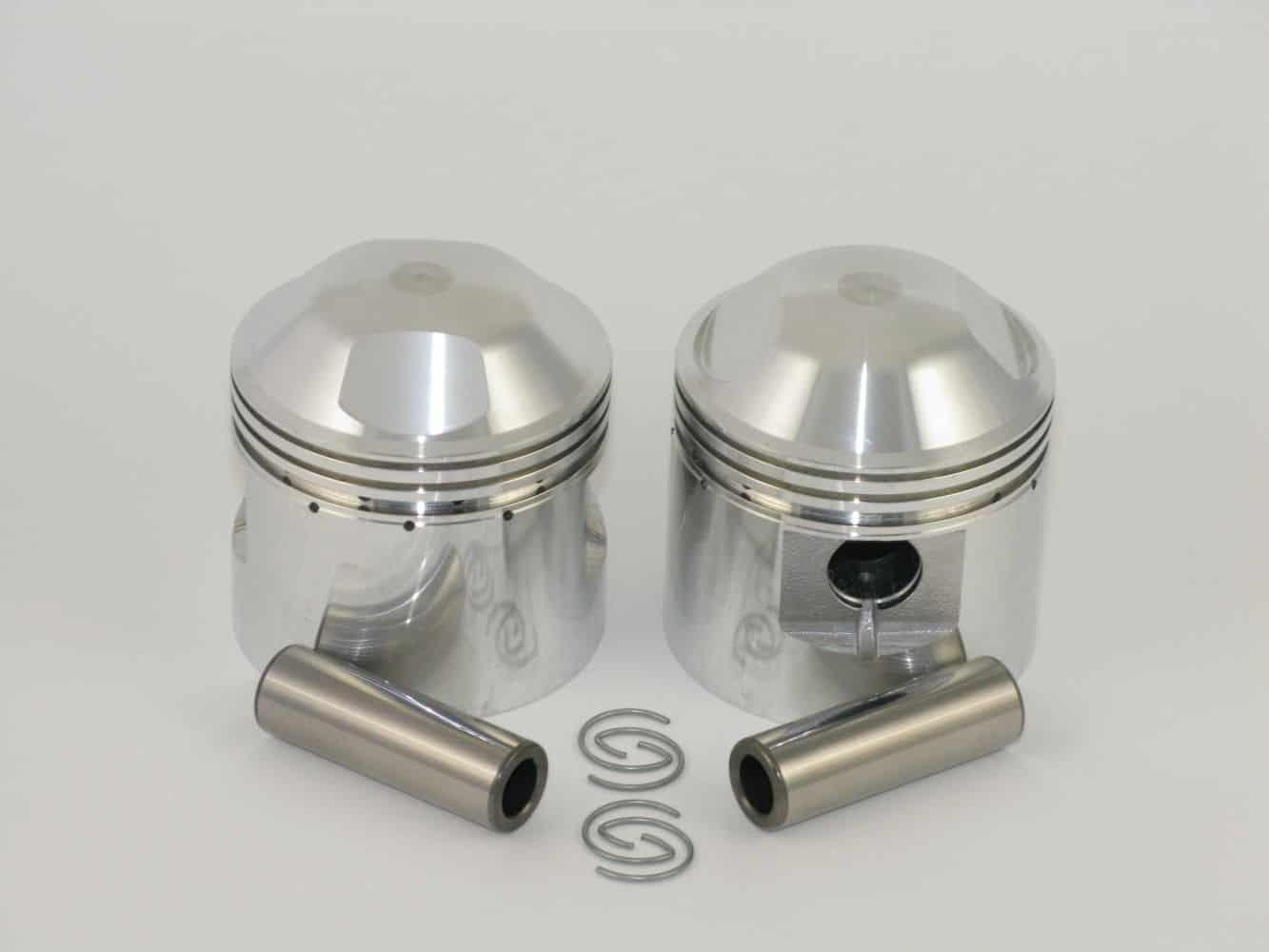Frequently asked piston questions:
What is the recommended cylinder to piston clearance?
For cast aluminium pistons we recommend .0035 – .005 (three and a half to five thousandths). This depends on a few things: the intended application, climate, and rider empathy. In all three of these variables the issue is heat. If you live in a warm climate, plan to race the bike, or ride hard a few extra thousandths of clearance would be helpful. Read our article on cylinder boring for further info: Cylinder Boring.
Forged pistons will require larger clearances. Since we only sell cast pistons it is best to contact the manufacture for their recommendations. To read about breaking in new piston rings read our article: Ring Seating Problems.
Why do modern rings have a larger end gap?
Modern materials will require changes to fitting practices. Triumph in their 1969 Service Bulletin amended the figures which still appears in most workshop manuals. The original figures called for .010 – .014 thousandths end gap (measured with rings inside cylinder bore). The revised figure calls for .015 – .020 thousandths. It is not uncommon to see up to .025 on a few makers. This should not be cause for concern.
Do rings have a top and bottom?
This pertains to compression rings only. Most of the rings we stock are symmetrical and can be installed either way. Some Hepolite and GPM rings have beveled inside and stepped outside. Kindly some makers mark their rings top so the installer knows which way is up. As a rule a compression ring with an inside bevel the bevel faces up. If the outside of the ring is stepped the thicker portion faces up. Click here to view the types normally encountered on British machines.
What do the paint marks inside JCC pistons indicate?
The green and pinkish red paint marks are factory weight indicators. Green gets packed together and pink gets pack together at the factory. We don’t have specific data on actual weights. Though JCC pistons and rings have been excellent when it comes to sizing.
Does it matter which way you install the piston? Or are pistons directional?
For at least the popular Triumph, BSA , and Norton models very few are sided or directional. Norton 750 Commando uses a left and right handed piston. The valve reliefs give you a good idea which is which. They are also stamped L and R. All the other pistons should not be directional. We know that the inlet valve is usually larger than the exhaust. So if you encounter a piston with unequal valve reliefs the large cutaway will be the inlet side.
What does the stamping on the piston indicate?
All pistons we sell are stamped with the size. British pistons are metric sizes but expressed in imperial over sizes. IE: 650 Triumph pistons are 76mm and stamped .020 or .5mm larger. Other brands may be stamped with metric equivalent size markings. Makers also may stamp a letter and number IE: L3 or 3L. This notes the type of aluminium alloy that the pistons are made of. Cast pistons are normally L3 or L4. Both are low expanding silicon aluminium alloys with slightly different compositions.
Why is my bike smoking after fitting new rings? Which way do I install these piston rings?
Check out our tech article Ring Seating Problems.
